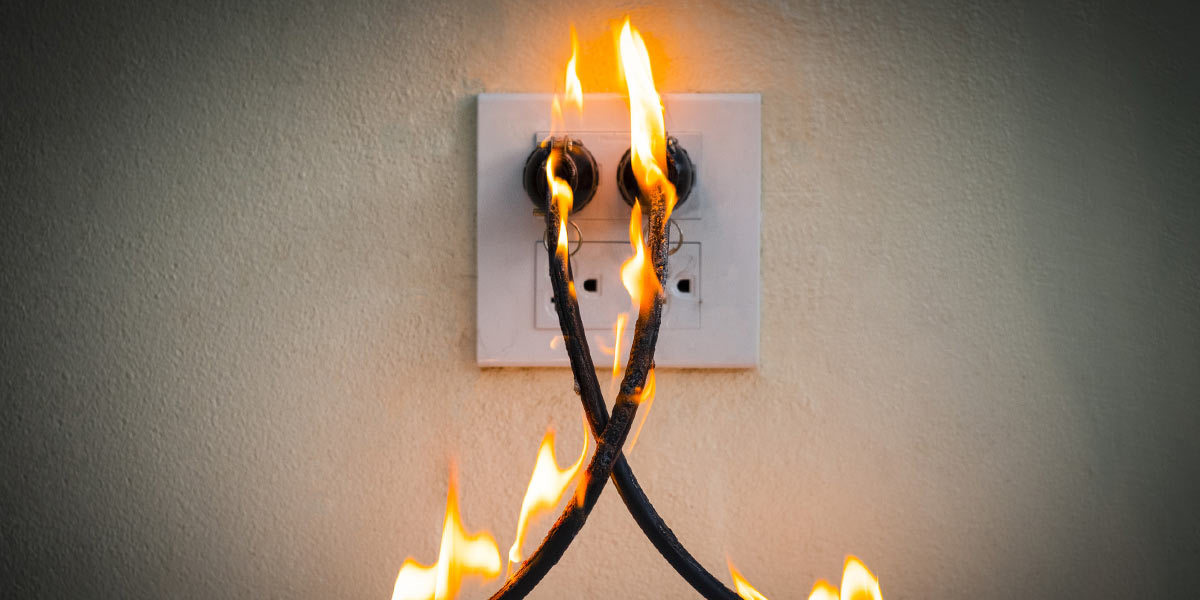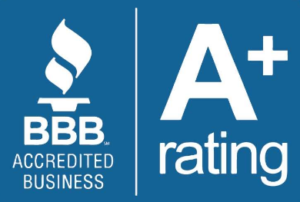Last updated on February 9th, 2022 at 12:34 pm
How Whole-House Surge Protection Could Save Your Family From Tragedy
A power surge can be a damaging and life-threatening event. But is a whole house surge protector the best prevention measure? Read this article and find out!
Electrical surges can lead to horrendous, life-threatening events.
They can also happen when you least expect them. In fact, more than half of electric surges within a home come from inside the house.
Of course, electricity is a necessity in your home, but how do you protect your property and, more importantly, your loved ones?
Luckily, whole house surge protection can safeguard you from costly damages and life-or-death situations.
Read on to learn more about how they protect you!
The Problem
There are two types of electric surges most homes experience: internal and external.
Electricity follows the most direct pathway to the ground. So, in order for electricity to travel, it must have something conducting it to the ground.
Unfortunately, your house can be that conductor.
Below, we’ll break them down so you can have a better understanding and how they affect you and your home’s safety.
Internal Surges
Internal surges are electric surges that come from inside your home.
Every house needs electricity. In fact, people now use electricity so often that it’s become a necessary part of many lives.
In addition to their home’s electrical wiring, most families also own a host of electronics that require electricity to function. These range from computers to cell phones to televisions to refrigerators.
Most homeowners don’t know electric surges actually happen in their homes on a daily basis. Some of these devices have motors that turn on and off automatically.
This causes a lapse in electricity when the motor is off and a surge when it turns on. Some common surge generators include refrigerators and hair dryers.
Usually, these surges do not become problems. If they did, manufacturers would not be allowed to let you take them home, and you would hear about a lot more incidents than you do.
However, even the slightest deviation in voltage can overwhelm your devices. This means that electrical items in your home can become damaged or even cause an emergency if something goes wrong.
Faulty Home Wiring
If you haven’t had your home’s wiring checked recently, you might want to.
Faulty wiring can contribute to many dangers in the home, including internal surges and electrical fires. Make sure that you know your home is safe from these incidences.
External Surges
Ever been told to unplug your devices during a thunderstorm?
That’s because this is what most people think of when they think of surges.
External surges come when an outside source, such as a lightning strike or inclement weather, takes down electricity in an area. Then, once electricity is restored, it surges back to your devices.
Surges can also come about when lightning hits electrical equipment, when a small animal gets into electricity outputting devices, or if a tree in your yard touches a power line.
There are ways to prevent external electrical surges from occurring These include unplugging devices when the power goes out and removing any tree limbs that may come into contact with power lines.
Another way is through installing whole house surge protection.
What Are the Possible Risks?
Of course, electricity is very dangerous. This should make surges a true concern for all homeowners and anyone else who regularly uses electricity.
Generally, the most damage comes from larger power surges, such as a lightning strike.
All devices have a standard amount of voltage that they are supposed to receive. This differs from device to device, which is precisely why there are different types of chargers as well as adapters.
During a surge, more electricity is coursing through your house and to your devices than usual. This uptick in electric current can damage your home’s electrical system by blowing fuses and melting circuits. This can then start a fire.
If your device is fed more electricity than it is able to handle, it can also be ruined. Depending on the strength of the surge, some devices even burst into flames.
If a large electrical surge happens and you’re unequipped, you could be out hundreds or thousands of dollars. Even worse, you could lose your home or your loved ones to a completely preventable fire.
This is why it is best to get a whole house surge protector to keep you safe.
What Is Whole House Surge Protection?
By now, you’re probably wondering what whole house surge protection is.
Put simply, whole house surge protectors redirect and ground excess electrical currents so that they don’t become a risk to your house.
Remember how we talked about electricity’s tendency to find the fastest way to the ground? Surge protectors make sure that it gets to the ground without disrupting your life in any way.
They are hardwired into your electrical system, blocking off any unwanted currents.
What Are the Benefits?
Protecting your home against surges has many benefits.
Let’s start with the most obvious: it keeps you and your family alive.
No one ever wants to contend with a house fire, especially not if the cause was a device catching fire from a surge. Many people die in house fires every year, so it’s important to make sure that people are protected when they are in your home.
Second, whole house surge protection often saves you money. Even though investing in it can be costly, it can spare you from having to replace expensive electronics.
It can also save you the cost of having to repair or rebuild your home if the surge causes damage.
Often, the damages from surges amount to a higher price tag than the surge protection hardware. As a result, homeowners who have surge protection find the cost of investing in and installing their protection worth it.
Wouldn’t Insurance Plans Cover Surges?
You might be wondering whether or not homeowner’s insurance could cover the cost of surge damages. The answer? Not necessarily.
In fact, few homeowner’s insurance plans cover things like lightning strikes, which are common sources of surges. That means if you choose to stick only to your insurance plan, you could be rolling the dice on thousands of dollars.
For many, it is better to purchase in-house surge protection than take those types of chances.
Are There Any Drawbacks to Whole House Surge Protection?
Whole house surge protectors do go a long way in helping you, your family, and your property remain from harm. However, they are not yet perfect, even if they are worth the investment.
Let’s discuss some flaws and how you can get around them.
Your House’s Existing Grounding System
Each home already has a system by which electricity is directed to the ground. The stronger your grounding system is, the better equipped your house is for a whole house surge protector.
If you have a poor grounding system, however, your surge protector will be less effective.
As a result, this drawback does not affect everyone. For people with already strong systems, surge protectors are an excellent addition to their home.
Fortunately, ground system updates are available. Because of this, you can get your grounding system strengthened before installing your surge protector.
Unsure about the quality of your grounding system? Hire an expert to come out and perform a test!
High Voltage Per Ratings
Many whole house surge protection systems are designed to catch high voltage surges from slipping into your home’s electrical system.
In other words, they have a high voltage per rating (VPR).
While this is helpful, high VPR systems are really only looking for high voltage surges. As mentioned above, it doesn’t take much more than a slight surge to overwhelm and damage devices.
Keep in mind that many lower voltage surges happen in your home throughout the day as well.
Because of this, you could end up buying a whole house protection system and still end up with high device replacement costs.
To get around this, experts recommend layering your defenses. After all, there are different types of surge protectors out there. Using them together gives you the best anti-surge defensive line.
Point-of-Use Protectors
Think of these as the sidekicks to your whole house surge protection system.
Point-of-use surge protectors may not protect your whole house. Yet, you can plug them into outlets, and they will protect your individual electronics.
But you don’t want to use them on their own. They have lower VPRs than whole house protection units. This means that they can become overwhelmed with larger surges. When this happens, they can burst into flames and suffer similar fates as electronics do.
Because of this, many people choose to use a whole house surge protection system to handle the higher voltages. They pair it with point-of-use protectors, which take care of the smaller voltages.
Ready to Install a System?
If you’re ready to install a whole house surge protection system, we couldn’t agree more with your choice.
Because this deals with the electrical components of your house, it’s important to hire people who know what they’re talking about.
Here at ServiceWise Electric, we specialize in installing electrical components, including surge protection systems. Contact us today to get started!









